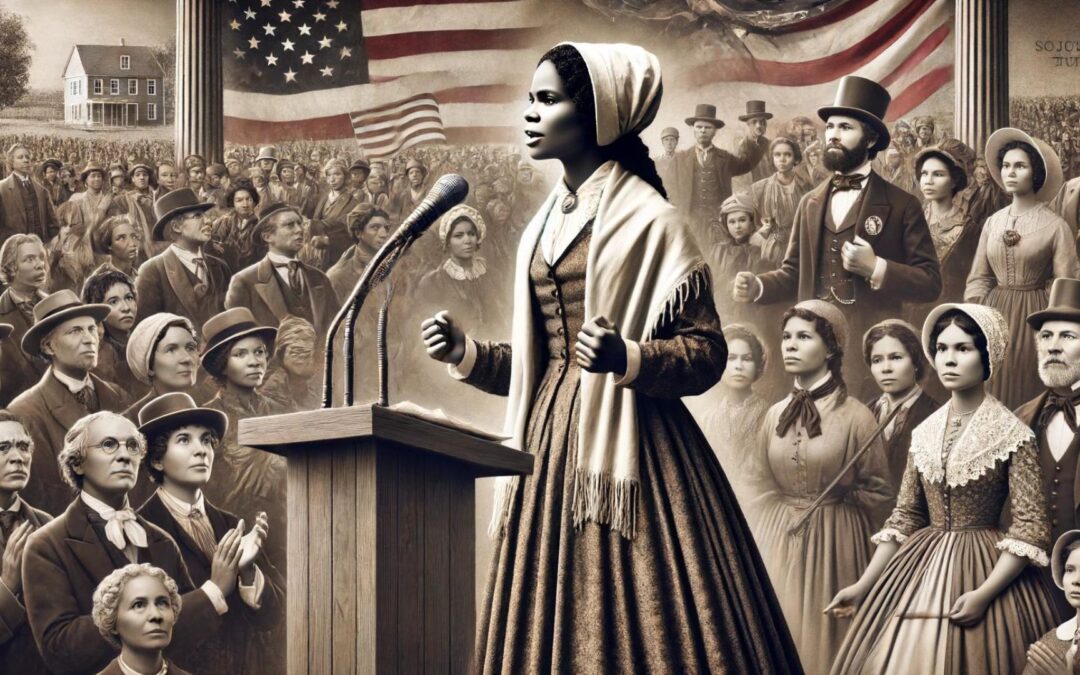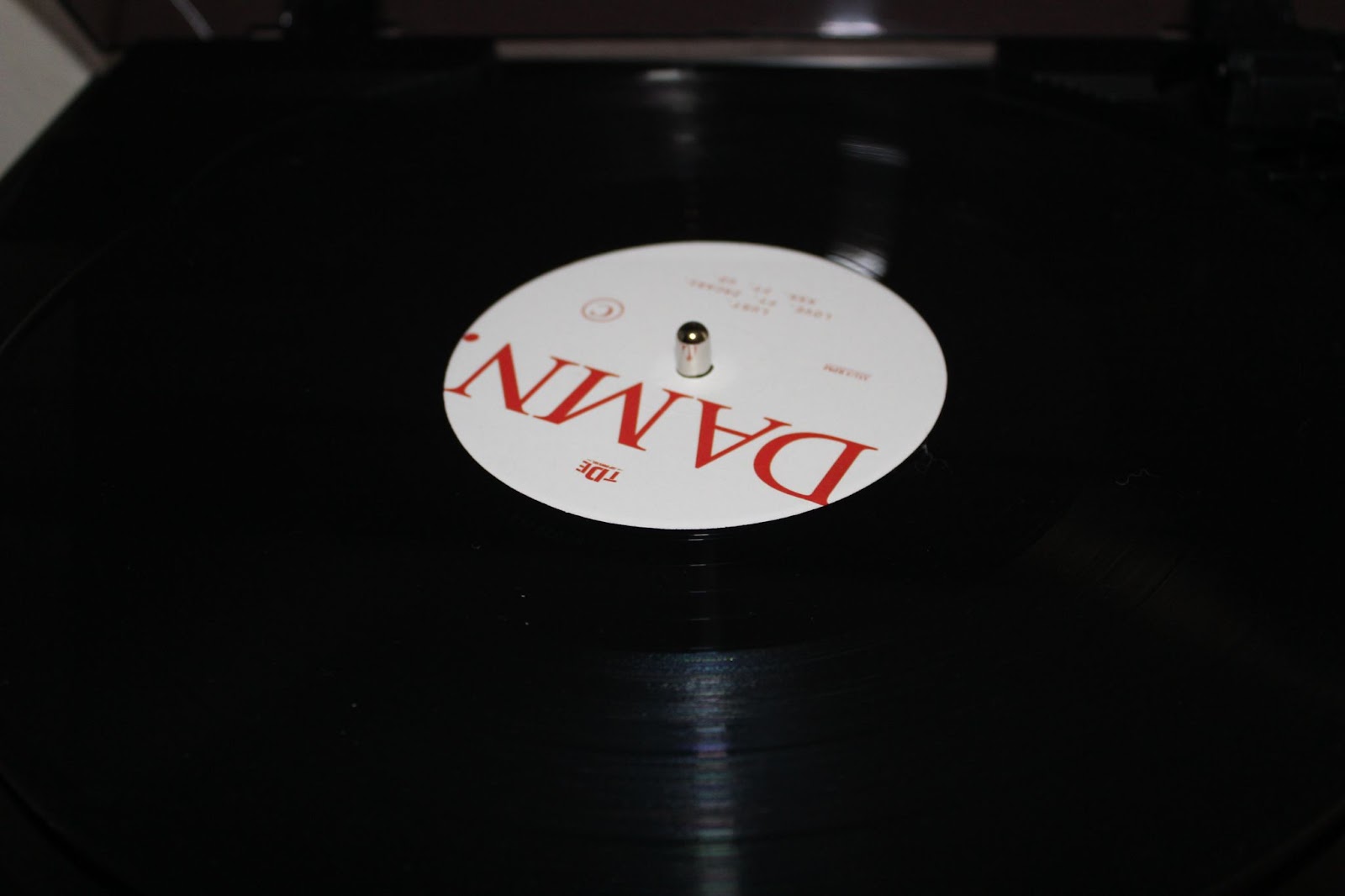Is a Picture Worth a Thousand Words?
A picture can be worth a thousand words or even more but, as I will argue, that depends on who looks at it, why they look at it, and in what circumstances. In other words, a picture’s meaning is relative to the viewer, and changes as the viewer changes.
Once upon a time pictures had a significance greater than themselves but that was when only the most skilled artists working in a difficult medium were able to produce them. Now pictures are everywhere we look and their significance has diminished as a result.
We take them for granted, we no longer study them but give them a quick, practiced glance and move on to the next picture. Some pictures will hold our attention for a little longer because the subject is unusual or amusing but mostly we see pictures as we see cars, people, traffic lights, and buildings. They’re part of our environment and hardly register in our consciousness. In the public sphere, then, pictures are mostly background colors consisting of advertisements, posters and billboards. These pictures are not meant to do more than direct our attention to the brand name.
In some countries, public pictures include portraits of dictators that are designed to unify people or make them accept the dictator as their rightful leader or make them more obedient to the leader. Propaganda posters may also brighten those streets, along with social realist depictions of model citizens. Such pictures are easily recognized as having a message and are thus negated, canceled out by people who have been bombarded with too many pictures like them.
Private pictures, such as a drawing made by a child or photos of our loved ones fascinate us because they bring back memories or mark an occasion or may even fill us with the love and tenderness we feel for those persons. However, that is a highly subjective response, one that certainly does not hold true everywhere and at all times. In these pictures, only the subject speaks to us, and if we know the subject well, if we are emotionally involved with him or her, then that is what we think about or why we feel the way we do. In those pictures, it is the subject that communicates, not the picture itself.
We go to a museum to look at paintings but there it is the making of the picture that most interests the viewer. A painter does not just point and click. He or she must first learn the techniques required to paint a picture, and after that must make a thousand different decisions about the picture to be painted. The pose, the angle from which the subject is viewed, the lighting, the composition, and much more are worked out in quick sketches.
The end product is a human artifact, something created mostly by the artist’s hands with a little help from the industry. We look at the picture but also at the other aspects of the work. Students spend years copying masterpieces in order to learn the techniques employed by these artists, and as part of their studies, they interpret the paintings in the context of the artist’s time and his other works until by the end the picture speaks volumes to them. For most viewers, however, the experience of looking at Rembrandt or Vermeer is one of wonder; but are they more interested in the image or the draftsmanship?
Where photos and paintings are equal, however, is that the more the viewer brings to them, the more they will get out of them. That is not just true of pictures but also of visiting the places we have only seen in pictures. Perhaps so many tourists take pictures of the places they visit to look at them later when they are back in the comfort and safety of their own homes.
There, relaxed and with far more knowledge of those places, they can look at the pictures and get a new story from them made up equally of the subject and their experience of it; or to put it another way, they can see how their travels have changed them by looking at the pictures, and what the picture tells them will reflect those changes.
Cite this paper
- Chicago (N-B)
- Chicago (A-D)
StudyCorgi. (2021, November 17). Is a Picture Worth a Thousand Words? https://studycorgi.com/is-a-picture-worth-a-thousand-words/
"Is a Picture Worth a Thousand Words?" StudyCorgi , 17 Nov. 2021, studycorgi.com/is-a-picture-worth-a-thousand-words/.
StudyCorgi . (2021) 'Is a Picture Worth a Thousand Words'. 17 November.
1. StudyCorgi . "Is a Picture Worth a Thousand Words?" November 17, 2021. https://studycorgi.com/is-a-picture-worth-a-thousand-words/.
Bibliography
StudyCorgi . "Is a Picture Worth a Thousand Words?" November 17, 2021. https://studycorgi.com/is-a-picture-worth-a-thousand-words/.
StudyCorgi . 2021. "Is a Picture Worth a Thousand Words?" November 17, 2021. https://studycorgi.com/is-a-picture-worth-a-thousand-words/.
This paper, “Is a Picture Worth a Thousand Words?”, was written and voluntary submitted to our free essay database by a straight-A student. Please ensure you properly reference the paper if you're using it to write your assignment.
Before publication, the StudyCorgi editorial team proofread and checked the paper to make sure it meets the highest standards in terms of grammar, punctuation, style, fact accuracy, copyright issues, and inclusive language. Last updated: November 11, 2023 .
If you are the author of this paper and no longer wish to have it published on StudyCorgi, request the removal . Please use the “ Donate your paper ” form to submit an essay.


'A Picture Is Worth a Thousand Words': Definition, Meaning, Examples

Have you ever tried to explain something to someone, and they just weren't getting it? Then the idiom 'A picture is worth a thousand words' might come in handy! In this article, you'll learn what it means, its origins, and how to use it.
The short version is:
- 'A picture is worth a thousand words' is a way of saying that showing someone a picture can be a more effective way of explaining something than using words.
What Does 'A Picture Is Worth a Thousand Words' Mean?
Many people are visual learners, but even those who aren't can benefit from an illustrated version of a complex idea. Take, for example, instruction manuals; they usually come with a picture or diagram or some sort of visual support to help you figure out how to use or build the item.
That's the idea that the idiom 'A picture is worth a thousand words' conveys. It means you can tell an entire story with just one picture and impart a concept or idea much more effectively.
The dictionary defines it as follows:
used to say that it is often easier to show something in a picture than to describe it with words
Imagine, for instance, that you were putting together a presentation for your team about the organization's progress over the last quarter.
Your colleague might say to you:
You should add in some graphs and charts. A picture is worth a thousand words.
Some variants of the expression include:
- A picture is worth ten thousand words.
- One picture is worth ten thousand words.
- One picture is worth a thousand words.
Where Does 'A Picture Is Worth a Thousand Words' Come From?
This expression has been around for a long time and is used in many countries worldwide. But where does it originate from? Here's what we know.
An Advertising Tool
The idiom in this specific form is attributed to Arthur Brisbane during a Syracuse Advertising Men's Club banquet in 1911. Rumor has it they got together to discuss the best marketing techniques, and Brisbane is known to have said:
Use a picture. It's worth a thousand words.
The event and this quote were documented in the Post-Standard newspaper and advertising trade journal Printers' Ink.
Later, Fred R. Barnard used the phrase ' One picture is worth ten thousand words. ' in a Printers' Ink 1921 issue to promote the use of pictures on advertisements on streetcars (old school trams).
A Chinese Proverb
It was commonly believed for some time (and probably still is by some now) that this idiom is actually a Chinese proverb and was attributed to the famous philosopher Confucius. But there's actually a straightforward explanation.
Remember Barnard, the guy who promoted the use of pictures in ads on streetcars? Yeah, that guy. He also put out another ad in the Printer's Ink six years later, where he wrote 'One Picture Worth Ten Thousand Words' and labeled it a Chinese proverb.
It was later revealed that he lied about this so that people would take it seriously. So it's confirmed this is definitely not a Chinese proverb.
Earlier Variants
While this specific adaptation of the phrase was popularized in modern times, other versions meaning the same thing were used long before that. It's such a popular message that there are too many to list here, but I'll show you some poignant examples.
As far back as the 15th or 16th century, Leonardo also expressed this idea in one of his notebooks—possibly in his "Codex Atlanticus," a collection of his writings and drawings. The specific date of when he wrote this quote may not be available, as his notebooks were filled with various ideas, sketches, and observations over a long period. However, Leonardo da Vinci lived from 1452 to 1519, and his notebooks contain writings from throughout his life. He said something along the lines of:
A poet would be overcome by sleep and hunger before being able to describe with words what a painter is able to depict in an instant."
In 1861, Russian writer Ivan Turgenev wrote:
The drawing shows me at one glance what might be spread over ten pages in a book.
At one point, even Napoleon Bonaparte had a go at it and said (translated from French):
A good sketch is better than a long speech.
In Ivan S. Turgenev's 1862 novel Fathers and Sons, one of his characters says:
Examples in Sentences
Now we've covered the meaning and origin of the phrase, let's check out some examples where this idiom is used in sentences :
While on vacation , we saw such amazing sunsets; it really made me realize that a picture is worth a thousand words. The documentary used striking images of the wildlife to convey its message, proving that a picture is worth a thousand words. You use a lot of smart words but a picture is worth a thousand words. Her facial expression, captured in that photograph, told a story that words could never fully convey—a true example of how a picture is worth a thousand words. The artist's painting of a field of flowers was so evocative that it demonstrated the age-old adage that a picture is worth a thousand words. Instead of describing the scene in detail, I showed them the picture, as I knew a picture is worth a thousand words. You can tell many tales with words but a picture is worth a thousand words. The infographic in the presentation summarized the data beautifully, proving that sometimes a picture is worth a thousand words. The marketing team decided to proceed with using a captivating image in their ad campaign, knowing that a picture is worth a thousand words in grabbing people's attention. As a travel blogger, she always relied on stunning photos to illustrate her adventures, believing that a picture is worth a thousand words.
Other Ways to Say 'A Picture Is Worth a Thousand Words'
There are other ways to express the fact that a picture explains something better than words.
Here are some of them :
- A picture paints a thousand words.
- Every picture tells a story.
- It's better to see something once than to hear about it a thousand times.
- Seeing once is better than hearing twice.
- Show, don't tell.
Concluding Thoughts
That concludes this article about this famous saying. To summarize, to say that a picture is worth a thousand words is to say that a picture is often a more effective way of conveying a message than using words.
Are you ready to learn more English phrases and expand your vocabulary? Check out our idioms blog for idioms, expressions, sayings, and more!
Learn More:
- Nonce Words: What Are Nonce Words? Definition and Examples
- Loan Words: What Are Loan Words? Definition and Examples
- Confusing Words: 51 Commonly Confused Words in English (Examples)
- Curse Words: What Are Bad Words in English to Call Someone? (Examples)
- Transition Words: What Are Transition Words? Definitions and Examples
- 'Tie the Knot': Definition, Meaning, Examples
- Compound Words: What Are Compound Words? Definition and Examples
- 'Where There's Smoke, There's Fire': Definition, Meaning, Examples
- 'You Can't Have Your Cake and Eat It Too': Definition, Meaning, Examples
- 'Keep Your Chin Up': Definition, Meaning, Examples
- 'Let Sleeping Dogs Lie’: Definition, Meaning, Examples
- 'All Bark and No Bite': Definition, Meaning, Examples
- 'Make a Mountain Out of a Molehill’: Definition, Meaning, Examples
- ‘Actions Speak Louder Than Words’: Definition, Meaning and Examples
- Onomatopoeia: What is Onomatopoeia? Discovering Sound Words in English (Examples)
We encourage you to share this article on Twitter and Facebook . Just click those two links - you'll see why.
It's important to share the news to spread the truth. Most people won't.
Add new comment Cancel reply
Your email address will not be published. Required fields are marked *
Save my name, email, and website in this browser for the next time I comment.
Post Comment

Want to create or adapt books like this? Learn more about how Pressbooks supports open publishing practices.
12.1 Introduction: A Picture is Worth a Thousand Words
We live in a world in which visual literacy is an important skill. Visual literacy translates directly into a wide variety of careers—from fashion merchandising to interior design to real estate to business marketing to teaching. You know the saying: a picture’s worth a thousand words.
Without question, our entertainment, news, and advertisement industries understand the value of an image. Certainly the rise of social media as one of our primary means of communicating and sharing information has made it even more important to be well-versed in analyzing images.
The value that people assign to an image often says as much about the people as the image.
If you are a part of Gen Z, when you’re messaging and texting, your primary mode of communication and self-expression may be visual—in the form of memes. If so, you may already have a heightened understanding of the power of visual images. You know that even memes that do not contain words still hold messages and arguments. You know that visual images are an effective way to establish collective identity and audience. You know where to go to find good memes, and you know to head to Facebook if you want to find bad memes. You know that the criteria for a good meme differ depending on a person’s demographics and social identities. You know that audience appeal, relevance, and currency factor into the evaluation of memes. [1]
To illustrate this point, ask yourself: looking at the two collections of memes below, what can you tell about each person who sent them?
Meme Collection 1

Meme Collection 2

What information about each person can you tell based on their set of four memes? How are you coming up with your assessment of each person’s age, gender, social class, personality, preferred social media platform, and so on? What clues are you using as the basis for your argument?
One goal of this chapter is to increase your awareness of how you already analyze familiar visual works—like memes and advertisements— so that you can then apply those skills of analysis to written works that you’ll be reading in college. For instance, if you can see the importance of authority, audience appeal, relevance, and currency when you evaluate a meme, you can see the importance of authority, audience appeal, relevance, and currency when evaluating scholarly sources for your research paper.
Another goal of this chapter is to refine and improve the skills you use when analyzing images—skills such as summary, description, evaluation, and interpretation—by applying those skills to visual works that you may be less familiar with analyzing—including paintings, sculpture, and film.
[1] This sentiments in this paragraph were inspired by a visit to John Skarl’s ENGL 162 class at Medina County Career Center in Spring 2022 as he lead his students through an exercise on analyzing memes.
Continue Reading: 12.2 Writing About the Visual: Summary and Description
Composition for Commodores Copyright © 2024 by Mollie Chambers; Karin Hooks; Donna Hunt; Kim Karshner; Josh Kesterson; Geoff Polk; Amy Scott-Douglass; Justin Sevenker; Jewon Woo; and other LCCC Faculty is licensed under a Creative Commons Attribution-NonCommercial-ShareAlike 4.0 International License , except where otherwise noted.
Share This Book
A Picture is Worth a Thousand Words - Meaning, Origin and Usage
Are you looking for a way to tell someone to send you a picture of what they are trying to explain? You could always use the phrase, " a picture is worth a thousand words ." This post unpacks the meaning and origin of this saying.
" A picture is worth a thousand words " means that images tell a better story than words. By using images, you can convey your message in a visual representation that impacts others.
Example Usage
"Sandra spent an hour telling me about her vacation. I didn't realize how beautiful the place was until I saw her pictures. It's true what they say; a picture is worth a thousand words."
" A picture is worth a thousand words , and that picture has nothing good to say for itself."
"Don't you know that a picture is worth a thousand words ? There's no way you can deny involvement after they caught you on camera like that."

The origin of the proverbial saying " a picture is worth a thousand words " comes from a reinterpretation of previous expressions in the early 1800s. The Works of Mr. James Thomson, published in 1802 has the earliest rendition of the phrase as the following.
" One timely deed is worth ten thousand words "
The phrase also appears in the play, " The Trust: A Comedy, in Five Acts," published in 1808, where it reads.
" That tear, good girl, is worth ten thousand words ."
The American Journal of Education also published an earlier rendition of the saying in 1858.
" One fact well understood by observation and well-guided development is worth a thousand times more than a thousand words ."
However, the saying gained prominence in its modern form in America in the early 20th century.
Frederick R. Barnard published a column titled "One look is worth a thousand words" in the industry magazine " Printer's Ink " in December 1921. Barnard claims the saying has Japanese origins, and Printers ink would later publish the phrase as the following.
" Chinese proverb. One picture is worth ten thousand words ."
Phrases Similar to A Picture is Worth a Thousand Words
- Stop talking and send me a picture.
- Pics, or it didn't happen.
Phrases Opposite to A Picture is Worth a Thousand Words
- Words mean nothing.
- Images are easy to falsify.
What is the Correct Saying?
- A picture is worth a thousand words.
- A picture says a thousand words.
Ways People May Say It Incorrectly
The phrase " a picture is worth a thousand words " doesn't mean that a picture contains a thousand words of information. It means that images are more valuable than words when explaining concepts of events. So, you wouldn't use the phrase when you're referring to the video or other media formats, only images.
Acceptable Ways to Phrase It
You can use " a picture is worth a thousand words " in several social and professional situations. For instance, you could request someone to send you a picture of an item you're thinking about buying. You can also use the phrase to tell someone that a lot is going on in a specific image.
The phrase suits social and professional use. You could use it at work when you're telling a supplier to stop talking about a product and send you a picture so you can get a visual image. You could use it at home to tell someone to send you a picture of their vacation so you can get an idea of their trip.
Related posts:
- A Bird in the Hand is Worth Two in the Bush - Meaning, Origin and Usage
- How to Write a Letter to an Inmate
- How To Write A Certified Letter (With Templates)
- How to Write a Letter to the President of the United States
- How to Write a Postcard (with Tips & Examples)
- You’re My Muse – Meaning, Origin and Usage
Leave a Reply Cancel reply
Your email address will not be published. Required fields are marked *
A picture is worth a thousand words
What's the meaning of the phrase 'a picture is worth a thousand words'.
A picture tells a story just as well as, if not better than, a lot of written words.
What's the origin of the phrase 'A picture is worth a thousand words'?
This phrase emerged in the USA in the early part of the 20th century. Its introduction is widely attributed to Frederick R. Barnard, who published a piece commending the effectiveness of graphics in advertising with the title “ One look is worth a thousand words “, in Printer’s Ink , December 1921. Barnard claimed the phrase’s source to be oriental by adding “so said a famous Japanese philosopher, and he was right”.
“Chinese proverb. One picture is worth ten thousand words.”
The arbitrary escalation from ‘one thousand’ to ‘ten thousand’ and the switching from Japan to China as the source leads us to smell a rat with this derivation. In fact, Barnard didn’t introduce the phrase – his only contribution was the incorrect suggestion that the country of origin was Japan or China. This has led to another popular belief about the phrase, that is, that it was coined by Confucius. It might fit the Chinese-sounding ‘Confucius he say’ style, but the Chinese derivation was pure invention.
“One timely deed is worth ten thousand words” – The Works of Mr. James Thomson , 1802. “That tear, good girl, is worth, ten thousand words” – The Trust: A Comedy, in Five Acts , 1808. “One fact well understood by observation, and well guided development, is worth a thousand times more than a thousand words” – The American Journal of Education , 1858.
The idea that a picture can convey what might take many words to express was voiced by a character in Ivan S. Turgenev’s novel Fathers and Sons, 1862:
“The drawing shows me at one glance what might be spread over ten pages in a book.”
A similar idea was seen very widely in the USA from the early 20th century, in adverts for Doan’s Backache Kidney Pills , which included a picture of a man holding his back and the text “Every picture tells a story”.
Neither of the above led directly to ‘a picture is worth a thousand words’. Who it was that married ‘worth ten thousand words’ with ‘picture’ isn’t known, but we do know that the phrase is American in origin. It began to be used quite frequently in the US press from around the 1920s onward. The earliest example I can find is from the text of an instructional talk given by the newspaper editor Arthur Brisbane to the Syracuse Advertising Men’s Club , in March 1911:
“Use a picture. It’s worth a thousand words.”
Related phrases and meanings
Browse more phrases, about the author, gary martin, phrases & meanings.

- English Conversation Lessons
- English Essay Topics
- English Autobiography Examples
- Report Writing
- Letter Writing
- Expansion of Ideas(English Proverbs)
- English Grammar
- English Debate Topics
- English Stories
- English Speech Topics
- English Poems
- Riddles with Answers
- English Idioms
- Simple English Conversations
- Greetings & Wishes
- Thank you Messages
- Premium Plans
- Student’s Log In
- 1 item $2.00
. » Expansion of Ideas » A Picture is Worth a Thousand Words
Expansion of an Idea - "A Picture is Worth a Thousand Words" for Students / Teachers / Parents
Explore the famous saying "A Picture is Worth a Thousand Words". We believe that this phrase highlights the power of visual communication and the impact it can have on conveying complex ideas. Through our insightful articles, we provide a deeper understanding of the idiom and offer practical tips on how to enhance writing skills. Join us on this journey to become better communicators and harness the power of imagery.

- A Picture is Worth a Thousand Words
The proverb "a picture is worth a thousand words" is a well-known saying that suggests that a single image can convey more information or meaning than a lengthy description or explanation. This proverb highlights the power of visual communication and the impact that an image can have on a viewer.
The expansion of this proverb could be that "a single image can convey a complex idea or emotion more effectively than a thousand words." This proverb is applicable to various situations where words may fail to capture the full essence of a concept or emotion.
The proverb suggests that images can be incredibly powerful tools for communication, and can convey complex ideas or emotions in a way that is immediately understandable and relatable. It implies that images can have a stronger impact on a viewer than words alone, as they can evoke an emotional response and create a lasting impression.
Furthermore, this proverb encourages individuals to consider the use of visual communication in their own work, whether it be in art, design, or marketing. It reminds us that images have the power to tell a story, convey a message, and create a strong emotional connection with the viewer.
In conclusion, the proverb "a picture is worth a thousand words" highlights the power of visual communication and the impact that an image can have on a viewer. It encourages individuals to consider the use of images in their own work and to appreciate the effectiveness of visual communication in conveying complex ideas and emotions. It is a reminder that sometimes, a single image can speak louder than a thousand words.

English Courses
- Mom & Son Breakfast Talk
- Dad & Son Breakfast Talk
- Going Out for Breakfast
- Healthy Breakfast Ideas
- Breakfast Table Conversation
- Talking about Household Chores
- Power Outage Conversation
- Speaking About Vegetables
- Talk About Television
- Telephone Conversation in English
- Renting an Apartment Vocabulary
- Talking about Pets
- Self Introduction Conversation
- Introduce Yourself in English
- Morning Walk Conversation
- Make New Friends Conversation
- English Speaking with Friends
- Conversation Between Siblings
- Talking about Smartphones
- Talking About City Life
- English Conversation on the Bus
- Talking about Dust Allergy
- Talking about Food Allergies
- Brushing Teeth Conversation
- Replacing Worn out Toothbrush
- Brushing Teeth with Braces
- Switching to Herbal Toothpaste
- Benefits of using Tongue Cleaner
- Talking about Illness
- Talking about Fitness and Health
- Talking About Fitness for Kids
- Visiting a Doctor Conversation
- Speaking about Lifestyle
- Conversation about Air Pollution
- Using an ATM Conversation
- Opening a Bank Account
- Car Accident Conversation
- Talking about Accident
- Exam Conversation with Kids
- At the Library Conversation
- Talking about Studies
- Offline vs Online School
- Internet Vocabulary and Dialogues
- Advantages of Homeschooling
- Inviting for Birthday Party
- Phone Conversation
- Asking for Directions
- Conversation on the Plane
- At the Airport Conversation
- Lost and Found Conversation
- Museum Vocabulary
- Conversation about Traffic
- Order Food Over the Phone
- At the Restaurant Conversation
- Talking about Music
- English Music Vocabulary
- Talk on Music Band
- Shopping for Clothes
- Buying a Smartphone
- Ordering Flowers Conversation
- English Conversation in Vegetable Market
- At the Supermarket
- At the Pharmacy
- Friends Talking about Chess
- Importance of Outdoor Activities
- Talking About Football
- Weekend Plans Conversation
- At the Beach Conversation
- New Job Conversation
- Business English Conversation
- Expressing Boredom in English
- English Conversation at the Salon
- English Speaking at the Bakery
- Talking About Studies
- Siblings Studying Together
- Speaking about Outdoor Activities
- Talk About Photography
- Essay on My School
- Essay on Summer Vacation
- Essay on Time Management
- Essay on Hard Work
- Essay on Health is Wealth
- Essay on Time is Money
- Republic Day Essay
- Essay on My Hobby
- Essay on Myself
- Essay on My Teacher
- Essay on My Best Friend
- Essay on My Family
- Essay on My Mother
- Essay on My Father
- Essay on Friendship
- Essay on Global Warming
- Essay on Child Labor
- Essay on Mahatma Gandhi
- Essay on Holi
- Essay on Pollution
- Essay on Education
- Essay on Air Pollution
- Essay on Communication
- Essay on Doctor
- Essay on Environment
- Essay on Gender Inequality
- Essay on Happiness
- Essay on Healthy Food
- Essay on My Favorite Festival Diwali
- Essay on My Favorite Sport
- Essay on My Parents
- Essay on Overpopulation
- Essay on Poverty
- Essay on Travelling
- Essay on Unemployment
- Essay on Unity in Diversity
- Essay on Water Pollution
- Essay on Water
- Essay on Women Empowerment
- Essay on Yoga
- Essay on Christmas
- Autobiography of a Book
- Autobiography of a Brook
- Autobiography of a Camera
- Autobiography of a Cat
- Autobiography of a Classroom
- Autobiography of a Coin
- Autobiography of a Dog
- Autobiography of a Doll
- Autobiography of a Farmer
- Autobiography of a Flower
- Autobiography of a Football
- Autobiography of a Haunted House
- Autobiography of a House
- Autobiography of a Kite
- Autobiography of a Library
- Autobiography of a Mobile Phone
- Autobiography of a Mosquito
- Autobiography of a Newspaper
- Autobiography of a Pen
- Autobiography of a Pencil
- Autobiography of a River
- Autobiography of a Table
- Autobiography of a Tiger
- Autobiography of a Tree
- Autobiography of an Umbrella
- Autobiography of Bicycle
- Autobiography of Bird
- Autobiography of Chair
- Autobiography of Clock
- Autobiography of Computer
- Autobiography of Earth
- Autobiography of Lion
- Autobiography of Peacock
- Autobiography of Rain
- Autobiography of a Soldier
- Autobiography of Sun
- Autobiography of Water Bottle
- Autobiography of Water Droplet
- Adopting a Village
- Teaching Children in an Adopted Village
- Programs Organized in an Adopted Village
- Volunteering in an Adopted Village
- Activities in an Adopted Village
- School Annual Day Celebration
- Republic Day Celebration
- Teachers Day Celebration
- World Environment Day Celebration
- Children’s Day Celebration
- Visiting the Wild Animal Rehabilitation Centre
- The Animal Sanctuary Visit
- Animal Shelter Visit
- Animal Rescue Center Visit
- Adult Literacy Camp
- Burglary of Jewelry
- India Wins Test Match
- School Children Affected by Food Poisoning
- Heavy Rains in Mumbai
- School Children Injured in Bus Accident
- Complaint Letter to the Chairman of Housing Society
- Request Letter to the Municipal Corporation
- Complaint Letter to the State Electricity Board
- Suggestion Letter to the Chief Minister
- Request Letter to the District Collector
- Request Letter to the Commissioner of Police
- Application Letter for an Internship
- Application Letter for a Job
- Request Letter for a Character Certificate
- Request Letter for a Better Lab and Library
- Global Warming Debate
- Animal Rights Debate
- Climate Change Debate
- Gun Control Debate
- Role of Religion in Society Debate
- Republic Day Speech
- Poems about Life
- Poems about Nature
- Poems for Boys
- Poems for Girls
- Poems for Mothers
- Poems for Friends
- Poems for Kids
- Poems about Trees
- Poems about Peace
- Funny Poems
- Poems About Climate Change
- Poems about Dreams
- Poems about Education
- Poems about Environment
- Poems about Eyes
- Poems about Family
- Poems about Fear
- Poems about Feminism
- Poems about Flowers
- Poems about Freedom
- Poems about Friendship
- Poems about Happiness
- Poems about History
- Poems about Hope
- Poems about India
- Poems about Joy
- Poems about Loneliness
- Poems about Love
- Poems about Night
- Poems about Power
- Poems about Water
- Poems about Women Empowerment
- Poems about Women’s Rights
- Poems on Earth
- Poems on Home
- Poems on Honesty
- Poems on Humanity
- Poems on Jungle
- Poems on Kindness
- Poems on Mental Health
- Poems on Moon
- Poems on Music
- Poems on Patriotism
- A Bad Workman Always Blames His Tools
- A Bird in the Hand is Worth Two in the Bush
- A Fool and His Money Are Soon Parted
- A Penny Saved is a Penny Earned
- A Stitch in Time Saves Nine
- A Watched Pot Never Boils
- Absence Make the Heart Grow Fonder
- Actions Speak Louder than Words
- All Good Things Come to Those Who Wait
- All Good Things Must Come To an End
- All Is Fair in Love and War
- All That Glitters is Not Gold
- All’s Well That Ends Well
- An Apple a Day Keeps the Doctor Away
- An Empty Vessel Makes Much Noise
- An Idle Mind is Devil’s Workshop
- As You Sow, So Shall You Reap
- Barking Dogs Seldom Bite
- Beauty is in the Eye of the Beholder
- Beggars can’t be Choosers
- Better Late than Never
- Better the Devil You Know than the Devil You Don’t
- Birds of a Feather Flock Together
- Blood is Thicker than Water
- Boys will be Boys
- Charity Begins at Home
- Cleanliness is Next to Godliness
- Curiosity Killed the Cat
- Don’t Bite Off More than You Chew
- Don’t Bite the Hand that Feeds You
- Don’t Blow Your Own Trumpet
- Don’t Count your Chickens Before They Hatch
- Don’t Cry Over Spilled Milk
- Don’t Judge a Book by its Cover
- Don’t Put All Your Eggs in One Basket
- Don’t Put the Cart Before the Horse
- Don’t Throw The Baby Out With the Bathwater
- Early to Bed and Early to Rise Makes a Man Healthy, Wealthy, and Wise
- Easy Come, Easy Go
- Every Cloud Has a Silver Lining
- Every Dog Has His Day
- Fools Rush in Where Angels Fear to Tread
- Fortune Favors the Bold
- Give a Man a Fish, and You Feed Him for a Day; Teach a Man to Fish, and You Feed Him for a Lifetime
- Give Credit Where Credit is Due
- God Helps Those Who Help Themselves
- Half a Loaf is Better Than None
- Haste Makes Waste
- Health is Wealth
- Honesty is the Best Policy
- If at First You Don’t Succeed, Try, Try Again
- If It ain’t Broke, Don’t Fix It
- If the Shoe Fits, Wear It
- If you can’t Beat them, Join them
- If you Want Something Done Right, Do It Yourself
- Ignorance is Bliss
- It ain’t Over Till the Fat Lady Sings
- It Takes Two to Tango
- It’s a Small World
- It’s Always Darkest Before the Dawn
- It’s Better to Ask Forgiveness than Permission
- Its Better to Be Safe than Sorry
- It’s Better to Give than to Receive
- It’s Never Too Late to Mend
- It’s not What you Know, it’s Who you Know
- Jack of All Trades, Master of None
- Keep Your Friends Close and Your Enemies Closer
- Keep Your Mouth Shut and Your Eyes Open
- Kill Two Birds with One Stone
- Knowledge is Power
- Laughter is the Best Medicine
- Leave No Stone Unturned
- Let Sleeping Dogs Lie
- Life is a Journey, Not a Destination
- Life is Like a Box of Chocolates; You Never Know What You’re Gonna Get
- Like Father, Like Son
- Look Before You Leap
- Love Conquers All
- Make Hay While The Sun Shines
- Money Can’t Buy Happiness
- Money Doesn’t Grow on Trees
- Money Talks
- Necessity is the Mother of Invention
- No Man is an Island
- No Pain, No Gain
- Nothing Ventured, Nothing Gained
- One Man’s Trash is Another Man’s Treasure
- Out of Sight, Out of Mind
- Patience is a Virtue
- Practice Makes Perfect
- Prevention is Better than Cure
- Rome Wasn’t Built in A Day
- Slow and Steady Wins the Race
- The Early Bird Catches the Worm
- The Grass is Always Greener on the Other Side
- The Pen is Mightier Than the Sword
- The Proof of the Pudding is in the Eating
- There is No Place Like Home
- There’s No Time Like the Present
- Time Heals All Wounds
- Time is Money
- Too Many Cooks Spoil the Broth
- Two Heads are Better than One
- When in Rome, do as the Romans do
- Where There’s Smoke, There’s Fire
- You Can Lead a Horse to Water, But You Can’t Make it Drink
- You Can’t Have Your Cake and Eat It Too
- You Can’t Make an Omelet Without Breaking Eggs
- You Scratch My Back, And I’ll Scratch Yours
- You’re Never Too Old to Learn
- You’re Only As Strong As Your Weakest Link
- Parts of Speech
- Lola’s Dream
- Snowy Learns to Brave the Rain
- The Ant Explorer
- The Blind Archer
- The Brave Ant
- The Disguised King
- The Enchanted Blade
- The Enchanted Garden of Melodies
- The Endless Bag
- The Faithful Companion
- The Farmer’s Treasure
- The Frog and the Mischievous Fishes
- The Fruit Seller’s Fortune
- The Generous Monkey of the Forest
- The Gentle Giant
- A Blessing in Disguise
- A Dime a Dozen
- A Piece of Cake
- Apple of My Eye
- As Easy as Pie
- Back to the Drawing Board
- Beat Around the Bush
- Bite the Bullet
- Break a Leg
- Butterflies in My Stomach
- By the Skin of Your Teeth
- Caught Red-Handed
- Come Rain or Shine
- Cool as a Cucumber
- Cry over Spilled Milk
- Cut the Mustard
- Devil’s Advocate
- Down to the Wire
- Drink Like a Fish
- Eating Habits
- Supermarket
- Vegetable Market
- College Canteen
- Household Topics
- Diwali Festival
- Republic Day Wishes
- Birthday wishes for kids
- Birthday Wishes for Sister
- Birthday Wishes for Brother
- Birthday Wishes for Friend
- Birthday Wishes for Daughter
- Birthday Wishes for Son
- Women’s Day Wishes
- Thanks for Birthday Wishes
- Thank You Messages for Friends
- Thanks for Anniversary Wishes

Justin Morgan
Latest articles.
- Practical English Usage
- Overview of Babson University
- Babson University’s Entrepreneurship Program
- The Founding of Babson University
- Babson University’s Impact on the Global Economy
- Babson University’s Post-Pandemic Student Preparation
- Babson University’s Notable Alumni
- Babson University’s Business Research
- Campus Life at Babson University
- Babson University’s Leading Scholars and Experts
- Babson University’s Social Impact Program
- The Future of Babson University
- Top Programs at Cardiff University
- COVID-19 Research at Cardiff University
- Culture and Values of Cardiff University
#1 Site for Learning English
Huge Discount! One-Time $2 for Entire Site Content!
Not a customer buy now to unlock.

Full English Speaking Course - All Lessons - One Time Plan
Course Content for Students & Teachers:
100+ Video and Audio based English Speaking Course Conversations
12000+ Text & Audio based Frequently used Vocabulary & Dialogues with correct pronunciations
Full Grammar & 15000+ Solved Composition topics on Essay Writing, Autobiography, Report Writing, Debate Writing, Story Writing, Speech Writing, Letter Writing, Expansion of Ideas(Proverbs), Expansion of Idioms, Riddles with Answers, Poem Writing and many more topics
Plus Access to the Daily Added Content
Already a Customer? Sign In to Unlock
Username or Email Address
Remember Me
A Picture is Worth a Thousand Words
Meaning of “a picture is worth a thousand words”, origin of “a picture is worth a thousand words”, examples in literature.
If a picture paints a thousand words, then why can’t I paint you? The words will never show, to you I’ve come to know. If a face could launch a thousand ships, then where am I to go? there’s no one home but you, You’re all that’s left me too. And when, my love, for life is running dry, you come, and pour, yourself, on me. If a man could be two places at one time, I’d be with you. tomorrow and today, beside you all the way. If the world should stop revolving spinning slowly down to die, I’d spend the end with you, and when the world was through, Then one, by one, the stars would all go out and you, and I, would simply fly away
This phrasing goes as follows; “A picture is worth a thousand words.” What about words? Can they be forged into, A thousand pictures. People paint a visual, Long before we know them, Who’s to know what picture, Lurks behind the eye? Are we worth thousand visuals? For we have all their pictures, All their perfect words, All their protective hugs, All their loving kisses, And all their thoughtful idea.
Examples in Sentences
Related posts:, post navigation.
A picture is worth a thousand words
| Grammarist
The proverb a picture is worth a thousand words is probably not as old as you think. A proverb is a short, common saying or phrase. It particularly gives advice or shares a universal truth. We will examine the definition of the phrase a picture is worth a thousand words , where the expression came from as well as some examples of its use in sentences.
The phrase a picture is worth a thousand words means a picture may convey an idea more quickly and effectively than the written word. Writers of texts that describe concepts involving imagery or abstract thoughts need many words to get their points across. A photograph, artwork, drawing or graphics can often demonstrate an idea with one look, much more quickly than a narrative can explain things. A photograph or artwork may depict emotion, enabling the viewer to perceive the essence of the story without a word being written or spoken. Readers of articles or books must engage in a large amount of effort to mentally process the words in order to understand what the writer is trying to convey. Someone who simply views an image can capture the essence of the meaning of that image without a lot of explaining. The viewer may gain some insight from an image, however, even photographs are open to interpretation. A photographer may crop the picture, leaving out a factor that may be of some importance. He may highlight a point of view that does not tell the whole story. The viewer may not understand the context of what he is looking at, where a literary essay or some other written text may explain things more fully. While the phrase a picture is worth a thousand words has been labeled as a Chinese proverb and attributed to the philosopher, Confucius, in fact it is an American expression. The idea seems to have first been put forth around the turn of the twentieth century by a newspaper editor Tess Flanders, discussing strategies in publishing, editing and news reporting. The term was popularized in the 1920s by Fred R. Barnard, who is often credited with the origin of the proverb. He used the phrase a picture is worth a thousand words to discuss the use of drawn and photographic images to illustrate advertising. It was Barnard who ascribed the proverb to the Chinese, and later, the Japanese. He also used the term a picture is worth ten thousand words , though one thousand is the current quantity used in the expression. The phrase a picture is worth a thousand words is usually referring to a physical illustration, but it is occasionally used as an exhortation to use description in one’s writing, rather than simply reciting facts.
Examples They say a picture is worth a thousand words, but what happens when a photo’s caption is said to be untrue? ( Lancaster Farming) The inspiration for my project, “A Picture’s Worth a Thousand Words: Using Art to Study Culture and History,” came when I taught 10th-graders in an advanced English class specific to the Cambridge International program. ( The Herald Tribune ) “It is often said that a picture is worth a thousand words,” U.S. District Judge William H. Pauley III wrote above three pictures depicting mice near and, in one case, resting on top of the device. (USA Today) If “a picture is worth a thousand words,” then think of the slide as the thousand words you won’t have time to say — a supportive addition to your words. ( Forbes Magazine )
Grammarist is a participant in the Amazon Services LLC Associates Program, an affiliate advertising program designed to provide a means for sites to earn advertising fees by advertising and linking to Amazon.com. When you buy via the links on our site, we may earn an affiliate commission at no cost to you.
2024 © Grammarist, a Found First Marketing company. All rights reserved.
Unlocking the Power of Visualization: ‘A Picture is Worth a Thousand Words’
by English Plus | Dec 12, 2023 | Word Power

Episode Audio
A picture is worth a thousand words, episode script, literal meaning (visual imagery over verbal description):, metaphorical meaning (effectiveness of visual communication):, expressive meaning (conveying complex ideas simply):, emotional impact (capturing emotions and atmosphere):, “a picture is worth a thousand words” in advertising:, “a picture is worth a thousand words” in journalism:, “a picture is worth a thousand words” in education:, “a picture is worth a thousand words” in presentations:, origin of “a picture is worth a thousand words”.
Join Danny on English Plus Express as we delve into the timeless expression, “A picture is worth a thousand words.” This episode explores the depth and versatility of this phrase, demonstrating the power of visual communication. Through engaging examples and real-life applications, we uncover the beauty of this expression and how it enhances our understanding of language and imagery. Whether you’re a language enthusiast or simply curious about the nuances of English expressions, this episode offers insights that will enrich your appreciation of language. Tune in and discover how a single picture can speak volumes!
Hey everyone! Welcome to English Plus Express. I’m Danny, your linguistic tour guide, ready to dive into the colorful world of expressions. Today’s journey takes us to a well-known saying that’s as vivid as it is profound: “A picture is worth a thousand words.”
Now, this isn’t just about photographs or paintings. It’s about the immense power of visualization. Ever tried explaining the sunset to someone? No matter how poetic your words, sometimes, only a picture can capture that fiery sky, right? That’s the essence of our expression today.
This saying dates back to the early 20th century, a time when advertising was just beginning to understand the impact of images. But let’s bring it to the present. Think about emojis. Yes, those tiny, colorful symbols. A single emoji can convey what might take a whole sentence. A smiling face with heart-eyes? That’s like saying, “I love this so much!” without typing a word. That’s our expression in action in the digital age.
But it’s not just about brevity. It’s about the depth of expression. Consider a photograph from a historical event, like the moon landing. That single image encapsulates excitement, achievement, and human endeavor, telling a story far beyond what words alone could.
Let’s turn to advertising. Ever seen a billboard with just a powerful image and a brand logo? That’s this expression at work. Advertisers know that an impactful image can convey a lifestyle, a feeling, or an aspiration more effectively than a paragraph of persuasive text.
Now, think about how you can use this in your life. Maybe you’re giving a presentation. Instead of crowding your slides with bullet points, why not use a striking image to make your point? It’s not only more effective but also more memorable.
In storytelling, too, this expression holds power. A good writer knows when to describe a scene in detail and when to let a metaphorical ‘picture’ do the talking. It’s about striking that perfect balance between words and imagery.
So, as you go about your day, think about how you can apply this expression. Maybe it’s in how you communicate with friends, in a creative project, or even in understanding the world around you.
Thank you for tuning into English Plus Express. If you’ve enjoyed exploring the vibrant world of expressions with me, don’t forget to follow, share, and maybe consider supporting us on Patreon for more enriching content. Your support helps us continue unraveling the fascinating aspects of language and communication. Until next time, keep appreciating the power of words and pictures in your everyday life!
Meanings of “A Picture is Worth a Thousand Words”
Example: In a photography class, the instructor might say, “Remember, a picture is worth a thousand words,” emphasizing the importance of conveying a story or emotion through imagery rather than lengthy explanations.
Example: A marketing professional explaining the concept of brand logos might say, “A picture is worth a thousand words; our logo needs to instantly communicate our brand’s values and appeal.”
Example: An architect might use this expression when showing a 3D model of a building design, suggesting that the model explains the concept more effectively than a verbal description: “As they say, a picture is worth a thousand words.”
Example: Viewing a powerful historical photograph, one might reflect, “This really proves that a picture is worth a thousand words,” acknowledging the deep emotional impact that the image holds.
Collocations with “A Picture is Worth a Thousand Words”
Example: “In our latest campaign, we’ve focused on the principle that a picture is worth a thousand words, using impactful imagery to connect with our audience.”
Example: “In photojournalism, we often say a picture is worth a thousand words because a single photo can tell a story more powerfully than a written article.”
Example: “To help students understand complex concepts, I use visual aids because a picture is worth a thousand words.”
Example: “I’ve limited the text in my slides, adhering to the principle that a picture is worth a thousand words, to make the presentation more engaging.”
The origin of the phrase “A picture is worth a thousand words” is often attributed to Frederick R. Barnard, who used it in the advertising trade journal “Printers’ Ink” in 1921 to promote the effectiveness of graphics in advertising. However, the phrase was labeled as a Chinese proverb to give it more credibility. There is no direct evidence that it originated from a Chinese proverb. The essence of the phrase likely predates this attribution, as the idea that visual representation can communicate complex ideas effectively is a longstanding concept in many cultures. The exact etymological origin remains uncertain, but its widespread usage in the 20th century, particularly in advertising and journalism, solidified its place in the English language.

Get Vocabulary Voyages E-Book for Free!
Build your vocabulary today in the context of 40 beautiful stories about profound words with interactive elements, QR codes, exercises and more, for FREE ! You will get the FULL E-Book not just a preview!
I will also be sending you the weekly digest to share with you the latest content I add here on the website.
So what are you waiting for? Sign up today and get your weekly dose of English Plus content!
You have Successfully Subscribed!
We respect your privacy. Unsubscribe at anytime.
Submit a Comment Cancel reply
Your email address will not be published. Required fields are marked *
Submit Comment
This site uses Akismet to reduce spam. Learn how your comment data is processed .
English Plus
You may also like.

Word Power | The Serene Symphony of Tranquility
by English Plus | Feb 8, 2024
In this soothing episode of “Word Power,” join Danny as we embark on a peaceful journey into the heart of tranquility. Beyond its quiet exterior, tranquility is a profound state of calmness and peace that resonates deeply within the soul, offering a sanctuary from the chaos of the everyday world.

Word Power | The Elegant Tapestry of Eloquence
by English Plus | Feb 6, 2024
In today’s mesmerizing episode of “Word Power,” host Danny delves into the rich and intricate world of “eloquence.” This episode unravels the beauty and power of eloquence, a word that signifies much more than mere fluency or persuasiveness in language. It’s about the art of expressing thoughts and emotions in a way that is both impactful and graceful.

Word Power | The Sparkling Charm of Effervescence
by English Plus | Feb 5, 2024
In this uplifting episode of “Word Power,” join Danny as he uncovers the bubbly and vibrant world of “effervescence.” Beyond its fizzy surface, effervescence is a word that captures the essence of vitality, enthusiasm, and the spirit of life itself.
Recent Posts


If You Had Your Own Talk Show, Who Would Be Your First Guest?
Jun 21, 2024 | Spotlights Shorts
Explore the intriguing question of who would be your first guest if you had your own talk show. Delve into the significance of this choice, the impact of first impressions, and how to select a guest that sets the tone for your show.

“Don’t Cry” by Phoenix: Embracing Hope and Resilience
Jun 21, 2024 | Poetry Shorts
Explore the thought-provoking themes of “Don’t Cry” by Phoenix. Discover the poem’s message of resilience, seizing opportunities, and embracing hope amidst adversity.

The Remarkable Life and Legacy of Sojourner Truth: A Trailblazer for Equality
Jun 20, 2024 | Immortal People
Explore the inspiring life of Sojourner Truth, an African American abolitionist and women’s rights activist. Discover her greatest achievements, contributions, and lasting impact on the fight for equality and justice.

The Epic Tale of Beowulf: An Anglo-Saxon Masterpiece and Its Lasting Influence
Jun 20, 2024 | Great Stories
Explore the epic tale of Beowulf, an Anglo-Saxon masterpiece. Discover the story’s plot, themes, and characters, and learn about its enduring significance and influence on literature over the years.

How Learning New Skills Boosts Brain Health: Increasing White Matter Density
Jun 19, 2024 | Know Yourself
Discover how learning new skills can boost brain health by increasing the density of white matter. Explore the benefits of skill acquisition on cognitive function and overall mental well-being.

Understanding the Idiom “Know the Ropes”
Jun 18, 2024 | English Expressions
Discover the meaning and usage of the idiom “know the ropes.” Learn when it’s appropriate to use this expression, when it’s not, and explore practical examples to enhance your understanding and usage of this idiom.
- Crossword Puzzles in Context (176)
- Common Mistakes in English (5)
- Cultural English (7)
- English For Specific Purposes (3)
- Focus on Business (8)
- Focus on Grammar (8)
- Focus on Literature (7)
- Focus on Skills (7)
- Focus on Speaking (7)
- Focus on Vocabulary (8)
- Focus on Writing (7)
- Grammar And Vocabulary (6)
- Idiomatic Expressions (8)
- Listening and Speaking (3)
- Reading and Writing (3)
- Common Mistakes in English (14)
- Countries (15)
- Grammar (18)
- History (16)
- Literature (18)
- Science (19)
- Trivia (18)
- Vocabulary (17)
- English Expressions (45)
- English Usage (14)
- Flash Facts (44)
- Great Stories (20)
- Immortal People (20)
- Know Yourself (45)
- Poetry Shorts (35)
- Proverbs (81)
- Quotes (80)
- Spotlights Shorts (35)
- Word Power Shorts (44)
- A Very Short History of the World (16)
- Beyond Earth (2)
- Big Ideas Explained (13)
- Business Spotlights (42)
- Career Insights (28)
- Creative Writing Tips (21)
- Cultural Insights (28)
- Did You Know (26)
- Editorial (3)
- English Plus Multimedia (4)
- Fact or Fiction (22)
- Frequently Asked Questions (24)
- General Spotlights (10)
- Gods and Heroes (33)
- Grammar Galaxy (2)
- Health and Fitness (32)
- Her Story (2)
- History Spotlights (45)
- Lessons from Everything (1)
- Let's Get Creative (1)
- Lifelines (7)
- Literary Echoes (40)
- Magazine Series (1)
- Mysteries Revealed (25)
- Planet Earth (21)
- Curriculum Development (4)
- Education Policy (4)
- Education Spotlights (36)
- Educational Technology (10)
- Higher Education (1)
- Language Learning Strategies (5)
- Learning and the Brain (12)
- Parent and Community (13)
- Teacher Development (3)
- Teaching Strategies (1)
- Podcasting (2)
- Polyglot (1)
- Arts and Literature (6)
- Danny's Poetry (3)
- Immortal Books (8)
- Immortals (6)
- Ink & Ashes (1)
- Literary Spotlights (1)
- Myths and Legends (8)
- NonFiction (1)
- Poet Diary (1)
- Poetry for Everyone (6)
- Project Orpheus (1)
- Short Stories (2)
- Short Stories for Everyone (5)
- Writing Tips and Techniques (9)
- Science Spotlights (51)
- Short Introductions (183)
- Social Spotlights (51)
- The Journey Within (59)
- Top Ten (12)
- War and Peace (29)
- 101 Series (1)
- Ask Danny (1)
- Bonus Episodes (1)
- Business English (44)
- Common Mistakes (7)
- Discussions (5)
- Down to Business (3)
- Education for All (1)
- English Express (21)
- English in Context (1)
- English Plus in Action (1)
- English Plus Show (1)
- Fantastic Guest (4)
- Grammar (41)
- History (22)
- Know Thyself (2)
- Let's Talk Literature (5)
- Magazine Spotlights (1)
- Mythology (20)
- Our Story (1)
- Poetry (33)
- Pronunciation (4)
- Real Conversations (7)
- Science (20)
- Society and Culture (9)
- Stories (32)
- Technology (1)
- The Daily Digest (19)
- The Universe (1)
- Vocabulary Building (114)
- Vocabulary in Context (2)
- Vocabulary Voyages (3)
- Word Power (87)
- Writing (4)
- Featured Articles (10)
- Red Dead Redemption (1)
- The Last of Us (2)
- The Odyssey (1)
- Old Audio Series (6)
- Premium Episodes (5)
- Premium Series (6)
Pin It on Pinterest
Insert/edit link.
Enter the destination URL
Or link to existing content
A Picture is Worth a Thousand Words
- Alliteration
- Anachronism
- Antimetabole
- Aposiopesis
- Characterization
- Colloquialism
- Connotation
- Deus Ex Machina
- Didacticism
- Doppelganger
- Double Entendre
- Flash Forward
- Foreshadowing
- Internal Rhyme
- Juxtaposition
- Non Sequitur
- Onomatopoeia
- Parallelism
- Pathetic Fallacy
- Personification
- Poetic Justice
- Point of View
- Portmanteau
- Protagonist
- Red Herring
- Superlative
- Synesthesia
- Tragicomedy
- Tragic Flaw
- Verisimilitude
You are using an outdated & unsafe browser. Please upgrade your browser for a safer and improved web experience!
Lesson Plan
A picture is worth a thousand words: context rules all.
Developed by April J. Malone Wogaman Middle School Integrated Language Arts Grade Level: Middle School
Introduction
Inspiration.
Seminar with Michelle V. Agins; the world premiere of Wynton Marsalis’ The Ever Fonky Lowdown ; Othello at Shakespeare in the Park
This lesson evaluates the use of pictures and words to portray information and ideas. It does this by allowing students to create articles inspired by images and to evaluate whether those articles accurately capture the context or voice of the picture. The underlying academic skills used in this lesson are context, analyzing images and text, and utilizing appropriate word choice to convey ideas.
CCSS.ELA-LITERACY.RI.8.7 Evaluate the advantages and disadvantages of using different mediums (e.g., print or digital text, video, multimedia) to present a particular topic or idea.
CCSS.ELA-LITERACY.W.8.2 Write informative/explanatory texts to examine a topic and convey ideas, concepts, and information through the selection, organization, and analysis of relevant content.
CCSS.ELA-LITERACY.W.8.2.D Use precise language and domain-specific vocabulary to inform about or explain the topic.
CCSS.ELA-LITERACY.W.8.7 Conduct short research projects to answer a question (including a self-generated question), drawing on several sources and generating additional related, focused questions that allow for multiple avenues of exploration.
Objectives/Outcomes
I can decipher the proper context of a word, text, or visual representation of something based on evidence and research.
I can select, organize, and analyze important information to write a meaningful text.
I can write a meaningful text to examine a topic and relay ideas.
I can explain the advantages of using different mediums to present a particular topic or idea.
I can explain the disadvantages of using different mediums to present a particular topic or idea.
Teaching Approach
whole group, small group, individual conferences, gallery walk, gradual release model, collaborative discussion, peer editing
- Bell work (written and oral)
- Building Context Practice (written and oral)
- Is a Picture Worth a Thousand Words Challenge (written, rubric)
Lesson Preparation
Teacher needs.
What is Context?
Gallery Walk
The Best Way to Take Notes Explained
Bell Work resource sheet
-8 large pictures that were taken throughout the school year of students participating in different events, of programs that occurred at the school, and/or of school associated extracurricular events. Make sure that a few of them could be understood differently if students did not participate or know of the event. Post these around the room to create 8 stations.
Helpful Hints
This lesson requires constant student discussion. You may want to intentionally organize students into groups that will push them to have engaging dialogue.
Student Needs
-Loose leaf paper and writing utensils
Building Context Practice worksheet
Is a Picture Worth a Thousand Words? Challenge Rubric
Research Skills booklet
Cornell notes
Citation Machine
Prior Knowledge
Students should already be well informed about context clues, word choice, reliable and unreliable sources, and citing sources.
Student Voice
You can allow students to pick their groups or submit pictures of school events for the gallery walk. You could also allow students to create or chose their own picture for the 1000-word challenge.
context clues, word choice, text features, reliable source, unreliable source, resource citation
Evidence/Assessment of Outcomes
Students will show their knowledge of context by writing an informational text that captures the proper context of the picture they chose.
After students finish the writing challenge, they will write a brief argument defending or upholding the idiom, “A picture is worth 1000 words.” In this argument they must in some way, shape, or form, use the concept of context.
Enduring Understandings
Students are expected to learn that in life, all information has a context, and it is important to know and understand that context to know and understand a person, thing or occurrence. Pictures or messages stripped of context can be misconstrued or used incorrectly. Students will understand that they should think carefully before using or sharing images they find.
Learning Plan
“A picture is worth 1000 words” Analyze and respond to this quote
“A picture is worth 1000 words” gallery walk
Essential Questions
- Is a picture really worth a thousand words?
- Is it possible to capture a picture’s message with words?
- Is it possible to communicate without speaking or using sign language?
Focus Questions
- How can the lack of context confuse a reader or audience?
- Is seeing just one aspect of something enough to understand it?
- What are the advantages and disadvantages of using different mediums to present a particular topic or idea?
As described under Teacher Needs and Student Needs
Teacher and Student Performance Tasks
Bell work: “A picture is worth 1000 words” Analyze and respond to this quote. (After students complete the bell work, do a whole group share to discuss the bell work.)
Class activity : Group students into teams of three to four students, depending on the size of the class. Each group should start at one of 8 photograph stations.
At each station, groups will look closely at the pictures, describe what is going on in them, and discuss the situation or event that was happening while the picture was taken. One recorder should write the group’s responses, thoughts, and comments on a loose-leaf sheet of paper (copy the paper and distribute to each group member for future reference).
After 3 to 5 minutes, groups rotate to the next station and repeat until all groups have visited each station. To involve all group members, groups switch recorders at each station.
Students meet with at least three other groups in 5-minute rotations to compare and contrast their observations and discussions of the pictures. Bring the class back together to discuss what they discovered and how those discoveries relate back to the bell work.
Tell students that when they discussed the events that took place during the time the photographs were taken; they were discussing context. Then have students write down the basic definition of context in their notes and relate that definition to what they did in class.
word: context part of speech: noun
definition 1. The circumstances that form the setting for an event, statement, or idea, and in terms of which it can be fully understood.
example sentence When reading historical fiction, it is important to study the context in which the story was told.
synonyms: circumstances, conditions, surroundings, factors, state of affairs, frame of reference, contextual relationship
in layman’s terms: context is the background or situation for something or surrounding something.
What other definition of context have you heard and how does it help you understand something?
Class activity: Give students Cornell notes on context (social, personal, historical, and cultural) and have guided discussions on the concept. Ultimately, make sure students understand that including context means providing someone with the surrounding situation or a background picture of where the piece of information came from and what or who is involved.
Homework: Students annotate Cornell notes taken in class
phrase: out of context
meaning: Without the surrounding words or circumstances and so not fully understandable. If a statement, image, or event is given out of context, the circumstances surrounding them are not given correctly or understood, which may communicate something different from what was intended or what was actually occurring.
Think about the gallery walk that we took at the beginning of this lesson. Pick one picture that could be taken “out of context” if someone was shown it without a caption or background information and then explain how someone could take that particular picture “out of context.”
Class activity: Have students individually create context using the Building Context Practice sheet. Do the first one whole group as a “we do” and then give students fifteen minutes to complete the sheet. After students are finished, organize them in small groups to discuss and compare and contrast their answers.
Exit ticket: Based on the information about context you have learned and the work you did in class today, why do you think it is important to know the context of something?
Now it is time to give speech to a photograph. We are all familiar with the common saying, “A picture is worth 1000 words.” Now we are going to put this saying literally to the test. Get a Chromebook. After you log in type in the following website: https://allthatsinteresting.com/civil-rights-movement-photos#1 From this website pick just one picture to “speak” 1000 words for.
Class activity: Choose a photograph that was not chosen by any of the students during Bell Work. With that photo, model how to plan out their research, and then allow students to do the same with the photos that they chose.
Assignment: “ The challenge is to write a 1000-word text that best represents the picture. Make sure to include specific and accurate context so that readers fully understand the picture. Ultimately, you need to think about what message the picture was meant to portray and use your beautiful brain along with some research to write that message in no more or no less than 1000 words. Use the research skills booklet provided to guide you in your research.”
Homework: Students complete the rough draft
Have students work on their texts. Simultaneously, do individual conferences, have them peer edit, and have them work to improve their rough draft.
Homework: Students complete the final draft
Students share their text in small groups with each other and question each other about whether or not the picture needed the student created texts to “speak” for them.
Exit ticket: Write a brief argument defending or upholding the idiom, “A picture is worth 1000 words.” (In this argument they must in some way, shape, or form, use the concept of context.)
Final Review
If students put the pictures in proper context in their text for the Challenge, then that will serve as evidence of their understanding. Also, observations of their comprehensive conversations will aid in informing you of what they have learned.
Lesson Reflection
Have students share their text in small groups with each other and question each other about whether or not the picture needed the student created texts to “speak” for them. You can ask students if the picture would even need context if the person viewing it was from the same era that the picture was captured in.
You can ask students to discuss how the picture could be taken if others thought it was captured yesterday or if the person viewing the picture was from a different country, and so on and so forth.
These discussions will solidify how important context is.

What Does a Picture Is Worth a Thousand Words Mean?
Ever tried to describe a place you visited to someone, and gone on and on about how wonderful it was, only to end up saying something to the effect of, “I guess you’d have to see it to believe it”? It makes sense. After all, “a picture is worth a thousand words,” as they say. Let’s explore the meaning and history of this popular idiomatic and proverbial expression.
Your writing, at its best
Compose bold, clear, mistake-free, writing with Grammarly's AI-powered writing assistant
As illustrated above, this phrase is used to express that it can be easier to show something in a picture than to describe it by speaking words or using the written word. More specifically, it’s saying that often one single picture can more effectively convey something, or can depict something more vividly and clearly, than a lot of words—and can certainly do so faster. That’s why you may also hear or see the phrase as one picture is worth a thousand words . (It is also often written with a conjunction as a picture’s worth a thousand words .)
For example, it’s often easier to understand how to put a piece of furniture together by looking at pictures or illustrations, or even watching a video, of the necessary steps than it is to read paragraphs of instructions in a manual. Likewise, it’s typically much simpler and quicker to figure out how to get from point A to point B by looking at a map than it is listening to someone tell you or reading about all the turns to make and landmarks to be on the lookout for on your drive.

The History of the Expression
Ironically, it’s going to take quite a few words to explain the etymology of the common phrase. As is often the case with both idioms and proverbs in general, the exact origin of this expression isn’t known.
Similar expressions have been in use since at least the 1700s. In particular, it appears phrases using is worth a thousand words or is worth ten thousand words were common in the 18th and 19th century. For example, the similar phrase one timely deed is worth ten thousand words appeared in The Works of Mr. James Thomson , which is thought to have been originally published some time in the 1760s. (The playwright Henrick Ibsen is credited as saying something very similar in the late 19th century: “A thousand words leave not the same deep impression as does a single deed.”) Other phrases that can be traced to the 1800s convey that a tear is worth ten thousand words and that a well-understood fact is worth more than a thousand words. The specific idea that a picture is worth a thousand, or ten thousand, words is thought by some researchers to have first appeared in print in 1862, in the novel Fathers and Sons by Ivan Turgenev. A character in the book says: “The drawing shows me at one glance what might be spread over ten pages in a book.” However, there’s evidence that others expressed this earlier, and even much earlier. Napoleon Bonaparte said, “A good sketch is better than a long speech,” while Leonardo da Vinci wrote that a poet would be “overcome by sleep and hunger before [being able to] describe with words what a painter is able to [depict] in an instant.”
Fast forward to the early 20th century, to 1911 exactly, when the Syracuse Advertising Men’s Club held a journalism banquet. In an article in the Syracuse, New York, newspaper The Post-Standard about the event, the journalist quotes a speaker, Tess Flanders, as saying, “Use a picture. It’s worth a thousand words.” Others credit the quote to that event but to newspaper editor Arthur Brisbane. Whoever said it, their words were clearly very similar to the expression we know and use today, although not exactly the same. Shortly after, in 1913, an advertisement for the Piqua Auto Supply House of Piqua, Ohio, used the phrase one look is worth a thousand words .
It’s possible that the exact expression a picture is worth a thousand words first appeared in print in 1918: A newspaper advertisement for the San Antonio Light said:
“One of the Nation’s Greatest Editors Says:
One Picture is Worth a Thousand Words The San Antonio Light’s Pictorial Magazine of the War Exemplifies the truth of the above statement—judging from the warm reception it has received at the hands of the Sunday Light readers.”
Still, credit for modern use of the phrase is usually given to Frederick R. Barnard (or Fred R. Barnard), who wrote the phrase in the advertising trade journal Printers’ Ink (sometimes incorrectly written as Printer’s Ink ) to promote the use of images in advertisements on the sides of streetcars. In one ad, Barnard called the phrase a Chinese proverb (he later wrote that it was said by a Japanese philosopher), though he didn’t have proof of such an origin. Because of this, sometimes the expression is incorrectly attributed to Confucius. In the same publication, around the same time period, the phrase one look is worth a thousand words can be found.
What Are Idioms and Proverbs?
A picture is worth a thousand words is considered both an idiom and a proverb. An idiom is an expression with an intended meaning that typically can’t fully be understood just by looking at the individual words that comprise it. Idioms have figurative rather than literal meanings. Even if you’ve never heard the term idiom , you have most likely heard many idiomatic expressions. Here are just a few of the most common idioms used today:
You’re in hot water. His boss gave him the ax. It’s time to face the music. You’ve hit the nail on the head. If you took the first example literally, you’d think it was describing a person standing in a bathtub full of hot water, perhaps. But the expression is actually used to describe a person who’s in trouble. Likewise, rather than literally being handed a tool for chopping wood, if you get the ax from your boss, it means you’re getting fired. It’s time to face the music means that it’s time to come to terms with the consequences of your actions. And when someone has hit the nail on the head, they’ve gotten an answer exactly right or done something exactly as it should have been done. Although you might be able to understand the expression a picture is worth a thousand words just by looking at the words that comprise it, if you were to take it purely literally, you’d understand it to mean that a picture is worth or is the same as/equivalent to exactly one thousand words. Of course, now you know that like other idioms, the phrase is used more figuratively, to convey the notion that an image can often more effectively and more succinctly say something than lots of words can (with lots not being defined as a specific number). Proverbs are short, common phrases or sayings that impart advice or share a universal truth. Interestingly, some people debate the truth of the above statement, with many arguing that the use of both images and words is the best way to get something across. Proverbs are also called adages, aphorisms, and maxims . Here are some additional examples of well-known proverbs: Absence makes the heart grow fonder. Blood is thicker than water . A picture is worth a thousand words. Beauty is in the eye of the beholder . Discover many more idioms and proverbs here . <H2>Summary<H2> The idiomatic and proverbial expression a picture is worth a thousand words is used to convey that a picture, or image, or graphic illustration may better convey or describe something than many written or spoken words—that it may be easier, and much faster, to just show someone something than to tell them about it. Although its exact origins are unknown, the phrase and the idea it conveys have been around, and remained popular, for quite some time.

Maggie Cramer
For the past 15 years, I've dedicated my career to words and language, as a writer, editor, and communications specialist and as a language arts educator. I'm excited to explore all things English with you and The Word Counter!
I currently reside in Asheville, North Carolina. I have a Bachelor of Fine Arts (BFA) in Writing, Literature, and Publishing from Emerson College and a Master of Education (MEd) in Secondary English Education from the University of Florida.
You can find me on LinkedIn , or access my online portfolio here !
Recent Posts

Damn Meaning: Here’s What It Means and How to Use It

The Meaning of Gauge: What It Is and How To Use It

What Does the Cheese Stands Alone Mean?

What Does 40 Winks Mean?
- To save this word, you'll need to log in. Log In
a picture is worth a thousand words
Definition of a picture is worth a thousand words
Examples of a picture is worth a thousand words in a sentence.
These examples are programmatically compiled from various online sources to illustrate current usage of the word 'a picture is worth a thousand words.' Any opinions expressed in the examples do not represent those of Merriam-Webster or its editors. Send us feedback about these examples.
Dictionary Entries Near a picture is worth a thousand words
Cite this entry.
“A picture is worth a thousand words.” Merriam-Webster.com Dictionary , Merriam-Webster, https://www.merriam-webster.com/dictionary/a%20picture%20is%20worth%20a%20thousand%20words. Accessed 21 Jun. 2024.
Subscribe to America's largest dictionary and get thousands more definitions and advanced search—ad free!

Can you solve 4 words at once?
Word of the day.
See Definitions and Examples »
Get Word of the Day daily email!
Popular in Grammar & Usage
Plural and possessive names: a guide, more commonly misspelled words, your vs. you're: how to use them correctly, every letter is silent, sometimes: a-z list of examples, more commonly mispronounced words, popular in wordplay, 8 words for lesser-known musical instruments, birds say the darndest things, 10 words from taylor swift songs (merriam's version), 10 scrabble words without any vowels, 12 more bird names that sound like insults (and sometimes are), games & quizzes.

Home / Essay Samples / Art / Photography / A Picture Worth A Thousand Words
A Picture Worth A Thousand Words
- Category: Art
- Topic: Photography
Pages: 3 (1182 words)
Views: 1584
- Downloads: -->
--> ⚠️ Remember: This essay was written and uploaded by an--> click here.
Found a great essay sample but want a unique one?
are ready to help you with your essay
You won’t be charged yet!
Modernism Essays
Pop Art Essays
Selfie Essays
Photography Essays
Creativity Essays
Related Essays
We are glad that you like it, but you cannot copy from our website. Just insert your email and this sample will be sent to you.
By clicking “Send”, you agree to our Terms of service and Privacy statement . We will occasionally send you account related emails.
Your essay sample has been sent.
In fact, there is a way to get an original essay! Turn to our writers and order a plagiarism-free paper.
samplius.com uses cookies to offer you the best service possible.By continuing we’ll assume you board with our cookie policy .--> -->